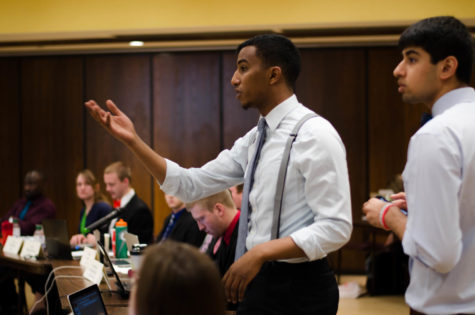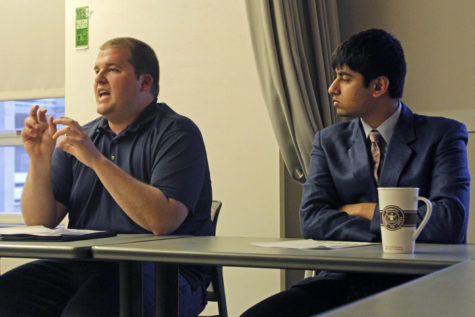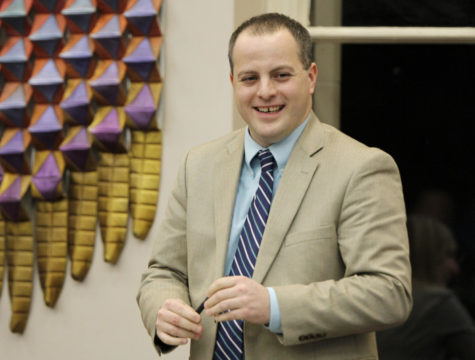Student debt: What you can do about it
January 22, 2013
Over the last decade or so, a new paradox has emerged for ISU students and graduates. While Iowa State is one of the most affordable institutions in the country, there remains one lingering problem, one that more than two-thirds of ISU graduates face upon graduation: student debt.
In 2011, according to the Project on Student Debt, the average ISU graduate left with $29,455 worth of debt. As a state, graduates of Iowa public and private four-year institutions left their respective universities with $28,753 in debt, high enough to place Iowa number six in the country.
One would think affordability leads to less debt, yet Iowa State remains an anomaly in this aspect. Nevertheless, there are many reasons to suspect why this is the case.
“It is somewhat clear that ISU reaches many students who may not qualify for significant aid beyond federal loans — yet the actual parental contribution is quite low for many of our students,” said Jonathan Fox, professor of human development and family studies and director of the Financial Counseling Clinic.
“[Iowa State’s] land-grant mission and appeal to a wide range of students from varied economic backgrounds is really something to be proud of. It is a terrific accessibility story, but certainly, on first look, it seems like something is broken.”
In fact, numbers can be deceiving. Roberta Johnson, director of the Office of Student Financial Aid, points out that Iowa State is unique compared to many other universities because of the types of programs and opportunities it provides, some of which are not taken into account in the student debt calculation.
“Two of our academic programs — architecture and landscape architecture — are five-year programs. So students in these programs incur an additional year of expenses in order to complete their degree,” Johnson said. “Many other of our students also seek study abroad experiences, which offer a wonderful complement to classroom experiences, but often add additional cost.”
Despite the reasons that may have skewed Iowa State’s student debt numbers higher than other institutions, this is still a major issue for ISU students.
As a state in 2011, 72 percent of graduates from Iowa schools have some level of debt.
However, as Fox and Johnson both stress, there are many resources Iowa State provides to help students identify student debt and help cope with this seemingly perpetual problem.
“The university offers a variety of services because no single methodology will suit every student,” Johnson said. “Students are required by law to complete entrance loan counseling prior to receipt of their first federal loan. We’ve introduced the Loan Payment Estimator on AccessPlus to show students what their borrowing levels are thus far and what their monthly payments will be based on that debt.”
Johnson also mentioned one-on-one financial counseling, orientation courses and the CashCourse tool found on the financial aid website as additional resources for students.
Another important resource that has shown success is the Government of the Student Body-funded Financial Counseling Clinic.
“GSB funds the Financial Counseling Clinic, one of 10 or so of its kind in the country,” said Jared Knight, president of the Government of the Student Body. “Students can talk to the counselors about any financial issue they have, including credit card debt, student loans and budgeting.”
The results of this clinic have been great, Fox said, director of the clinic.
“We know this helps reduce the financial stress of those participating in counseling sessions. Our measure shows about a 40 percent reduction in stress levels before and after counseling,” Fox said.
CyGold, a student organization, is also another tool which is being used by ISU students to reduce debt and improve financial literacy.
“We look to educate students about the issue and share the available resources on campus with them,” said Gregory Hunt, junior in finance and president of CyGold. “In effect, we act as a modified gateway to the financial counseling clinic and other resources here on campus, resources we are very lucky to have at Iowa State.”
Hunt went on to say that CyGold hosts presentations and workshops for any group of students interested and has raised the visibility of the one-year-old, but growing, student organization.
In order to get a grasp and wrangle in one’s own student debt, there seems to be a universal agreement among all financial aid experts. Prioritize yourself and your expenses, get help if needed and spend consciously.
However, above all, as Fox said, “reassure yourself often that education and an ISU degree was the best investment you could have made at the time.”









